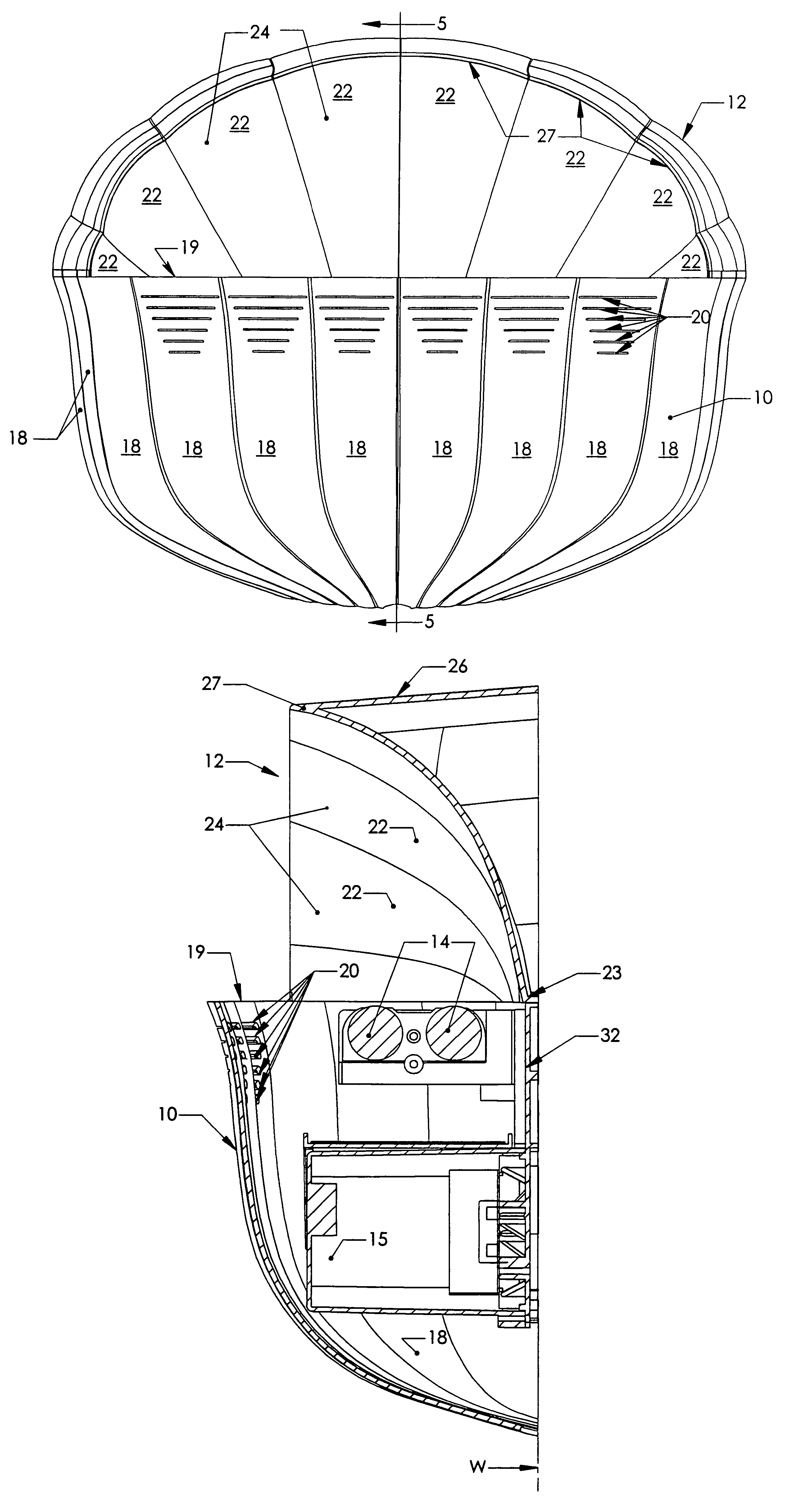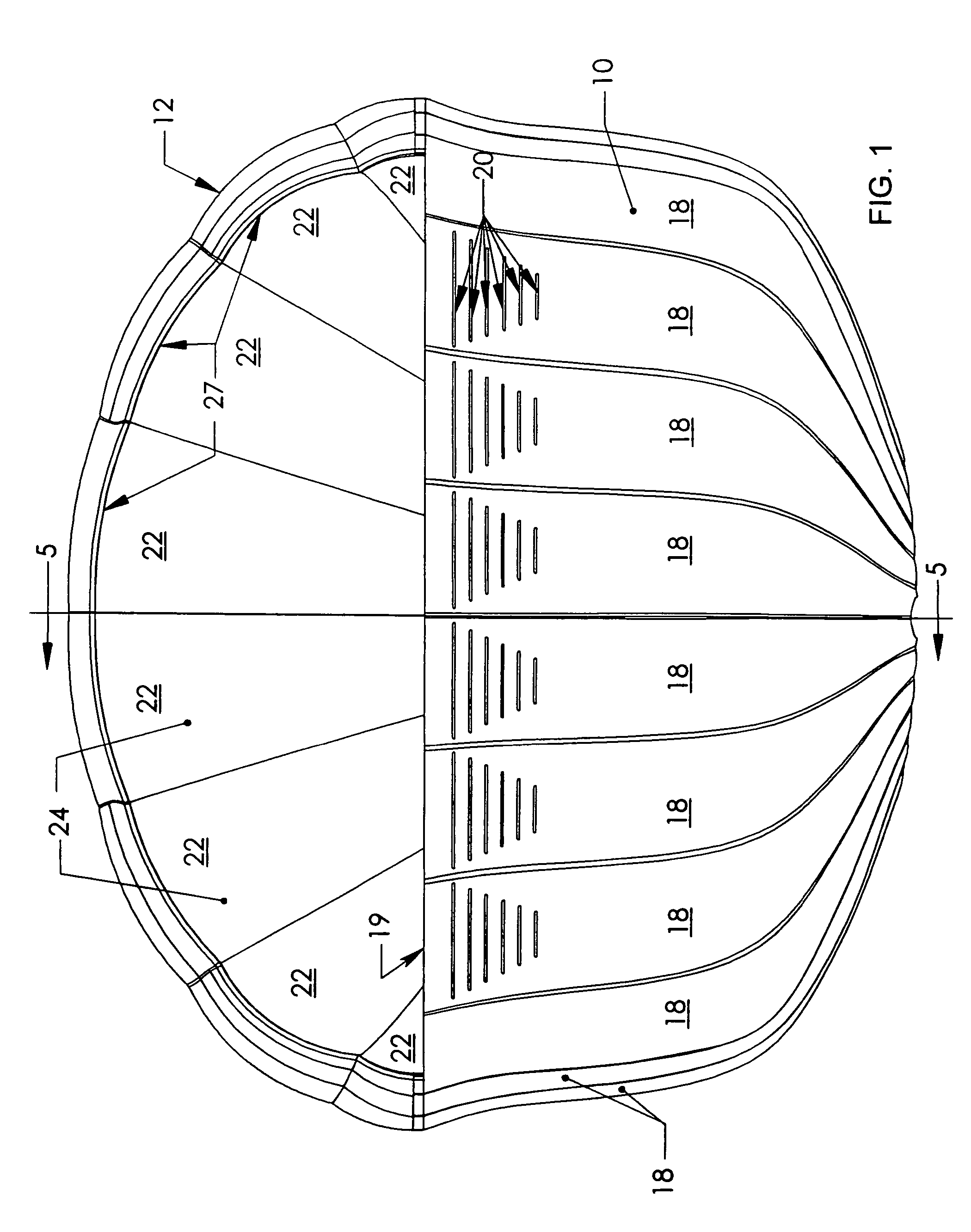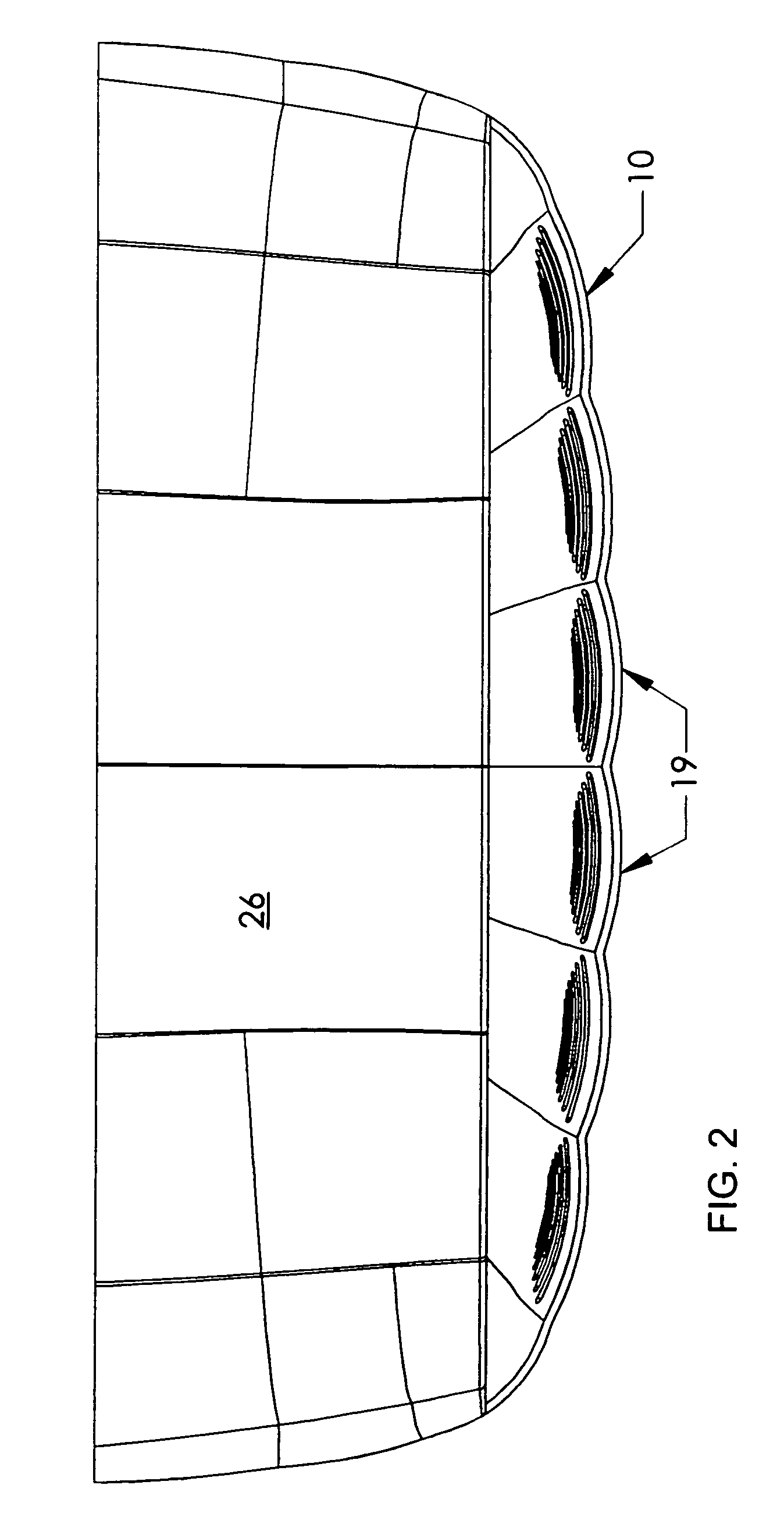Flying insect trap
a technology for flying insects and traps, which is applied in the field of flying insect traps, can solve the problems of preventing the direct view of the complete lamp at normal mounting height, and achieve the effect of enhancing insect attraction
- Summary
- Abstract
- Description
- Claims
- Application Information
AI Technical Summary
Benefits of technology
Problems solved by technology
Method used
Image
Examples
Embodiment Construction
[0018]Referring now to the drawing, it will be helpful in obtaining an overall understanding of the invention to identify the major components. These include a housing generally designated by reference numeral 10. The housing 10, as best seen from FIGS. 1, 2, 3 and 5 has a generally curved, concave shape having closed bottom, sides and front (except for the light slits to be described), and an open top and open back. Mounted above the housing 10 is a cover generally designated 12, and best seen in FIGS. 1–6. The housing 10 and cover 12 may each be integrally molded from a suitable plastic material such as polystyrene (impact) or other suitable plastics; and these two elements may be coupled together and mounted to a mounting plate 32 (FIGS. 5 and 6) which is secured with suitable fasteners to a wall designated W in FIG. 5 to form an integral unit, as will further be described within.
[0019]Referring for a moment to FIGS. 5 and 6, enclosed by the housing 10 are a pair of flourescent l...
PUM
 Login to View More
Login to View More Abstract
Description
Claims
Application Information
 Login to View More
Login to View More - R&D
- Intellectual Property
- Life Sciences
- Materials
- Tech Scout
- Unparalleled Data Quality
- Higher Quality Content
- 60% Fewer Hallucinations
Browse by: Latest US Patents, China's latest patents, Technical Efficacy Thesaurus, Application Domain, Technology Topic, Popular Technical Reports.
© 2025 PatSnap. All rights reserved.Legal|Privacy policy|Modern Slavery Act Transparency Statement|Sitemap|About US| Contact US: help@patsnap.com



